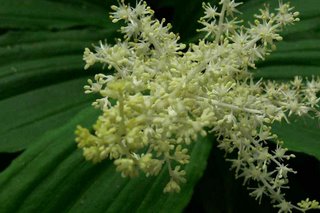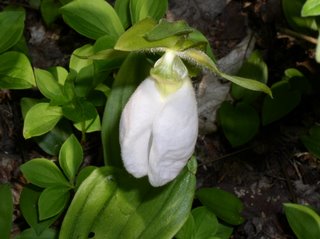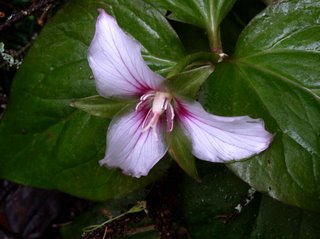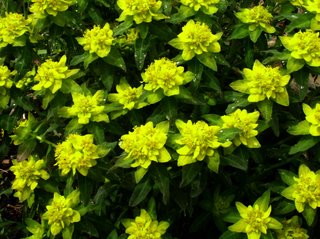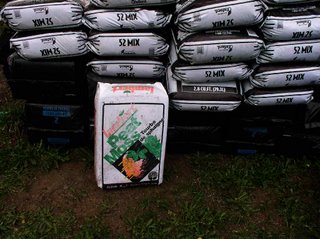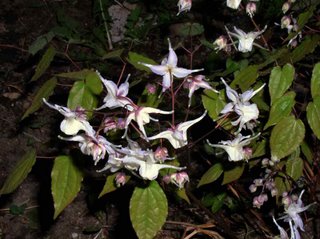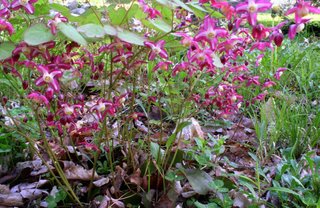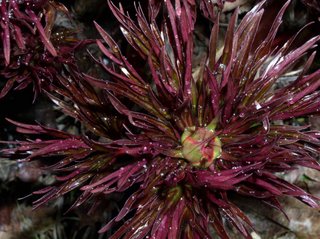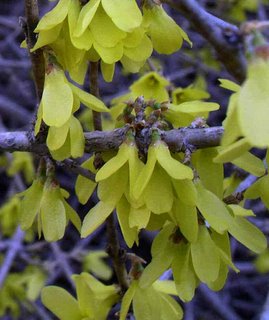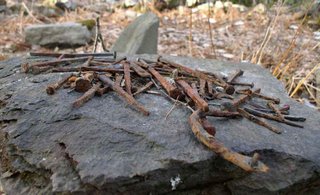
I headed for Brattleboro this morning knowing that if the weatherman was correct, it would be pouring buckets by the time I got there. Once again the report was accurate and my umbrella only deflected some of the water which fell from the sky. The fun of checking the rain gauge has long since passed and my thoughts more often turn to sunshine and how to catch up on lost revenues here at the farm. Agriculture is a tough business. I'm just thankful I don't have to worry about how to get the first cutting of hay off the fields.
When I returned to Marshfield, the rain had let up some but was still falling. No tire tracks in the driveway suggested no customers during my absence although Gail informed positively about a very nice lady and her daughter. They saw our advertisement in the local paper and decided to come visit. Gail thinks they will return again after having a nice visit and making some purchases. I asked Gail if she would like to walk to the lower garden and check for new peony blooms. Two cups of fresh coffee later we were on our way.
Peonies are a great flower which finally seem to be coming back into interest among gardeners. Our website has been picked up by too many crawlers that have placed us with florists and as a result we also receive calls this time of year from soon-to-be-brides trying to place orders for fresh cuts which we sell but don't ship. We don't read wedding magazines either but apparently peonies are well thought of as the inquiries continue until fall.
We started growing peonies over twenty years ago at our gardens in Shelburne. About 5 years ago I decided to begin to collect peonies and I started with a collection from Gilbert H Wild, a flower grower from Missouri established in 1885.
http://www.gilberthwild.com I can't remember if Wild's started with peonies or daylilies but they sell both now along with some iris and more recently some hostas. Their geography is excellent for growing these crops and I can't say that we've ever had anything but good luck with their plants. The first collection I ordered was 45 peonies and then one a year later I added close to 65 more. For the price and the opportunities, this is a good place to begin with. Probably the only surprise for first time growers is the roots won't ship til October when most gardeners are raking leaves and putting gardens to bed. That's because peonies have to start dormancy before they can be dug, divided and cleaned for shipping.
To me, peonies should be planted with some thought so they don't have to be moved in the future. It's not that they can't be moved, it's just a chore and any move can set them back a year or so depending on the care that is taken.
I suggest that folks think of planting a peony for life. That means figuring out where the sun shines nicely and how large the plant is likely to become over time. Next the hole should be extra wide and deep so it can be well amended. Some peonies in China are said to have been in place for over 750 years. True or not (and it likely is true!), this substantiates the need to plant the root correctly.
In a couple more weeks people will begin to stop here and ask about their peonies. Only gardeners with problems seem to ask questions. This amounts to one or two questions...seldom more. The first involves why there is lush foliage and never any flowers. Sometimes this leads to kind of a run-on statement-question...something like...."I don't have any ants at my place so probably that's why I don't get flowers??????". Someday I should make a list of "ant questions" as many are quite interesting.
Peonies are very hardy plants. They form tough roots which sprout stems from eyes which form on the rootstock the preceeding August. The flowers ultimately grow on the stems. The roots should be planted horizontally so they are never deeper than 1.5" to 2" under the surface. I explain to people to push an index finger down and if you hit the root by the time your second finger joint enters the ground, the root is probably planted correctly. Roots planted deeper than this just plain refuse to set buds, but they do produce nice foliage!
Each fall we clean up the summer's debris and each spring we fertilize around each plant. Commercial or organic fertilizers are both fine but try to get to the 10-10-10 level and be sure to keep the fertilizer away from the new growth.
Long about the end of May, our older plants display a quantity of stems, sometimes 20-30 stems per plant. Some gardeners prefer to lend support using various commercial wire products but we just run a piece of gardener's twine twice around each plant. This holds up the plants and flowers, especially if the flowers have opened in sync with a heavy rain. Unsupported, the plants fall to the ground and are a mess to look at or enjoy.
If you buy a new property or try to reclaim older plantings around your home, check any peonies you find with my "index finger" method. Over time roots become covered and they need to be brought back to the correct level. Follow these simple directions and you'll grow nice peonies forever.
Peonies cut when the tight buds are just showing color, can be kept in the bottom of the fridge for up to 30 days. Give the stems a fresh cut and put in a vase. You'll be surprised when they open. Peonies hung upside down in a warm dry place just after they have opened will open fully and dry nicely. Once completely dry they can be sprayed with a commercial flower spray and used in dried arrangements.
Still have questions? Try the American Peony Society website....or send us an email at lilies@together.net We try to answer questions.
Pictured above: Illini Belle
From the hill above Peacham Pond,
George Africa
http:vermontflowerfarm.com
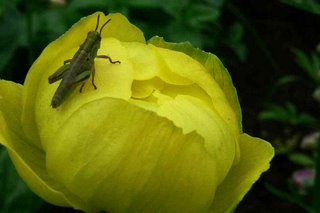 Time is hopping along like this new grasshopper on a very special trollius named 'Earliest of All'. Trollius are in the buttercup family and a quick glance at the leaves and the flower added to a dash of imagination and you can see the linkages. We have been growing these for a few years and have yet to figure out how many to have ready for people. It seems that as more and more folks read good garden design books and magazines, they see the benfit of planting in 3's. This is great for sales but sometimes we forget to get stock into the ground for the future...or into our gardens for personal enjoyment.
Time is hopping along like this new grasshopper on a very special trollius named 'Earliest of All'. Trollius are in the buttercup family and a quick glance at the leaves and the flower added to a dash of imagination and you can see the linkages. We have been growing these for a few years and have yet to figure out how many to have ready for people. It seems that as more and more folks read good garden design books and magazines, they see the benfit of planting in 3's. This is great for sales but sometimes we forget to get stock into the ground for the future...or into our gardens for personal enjoyment.